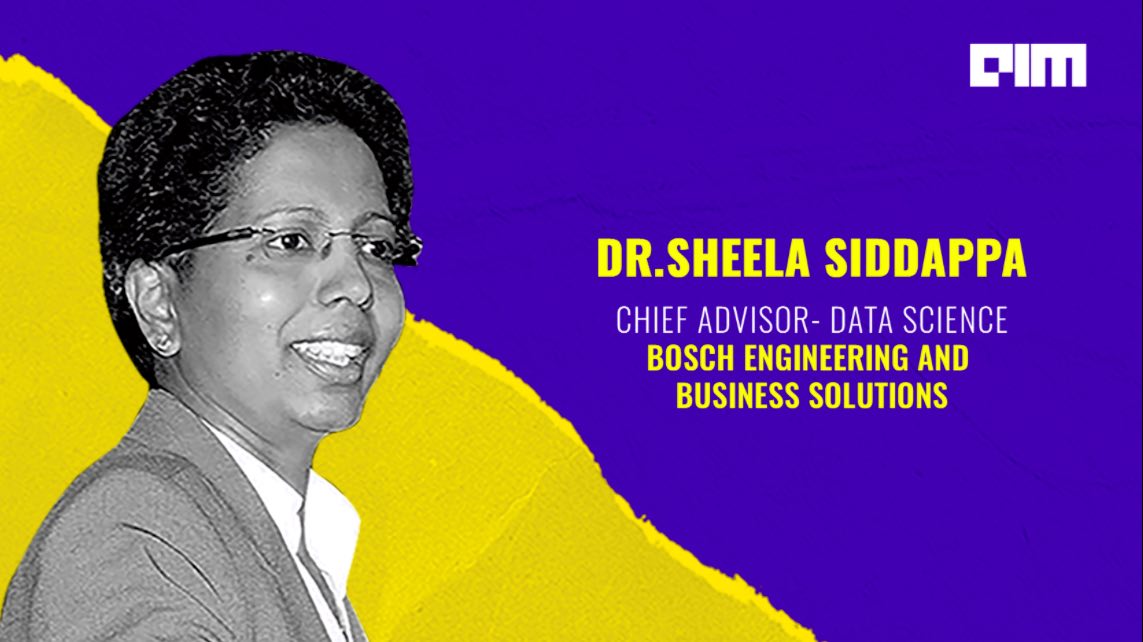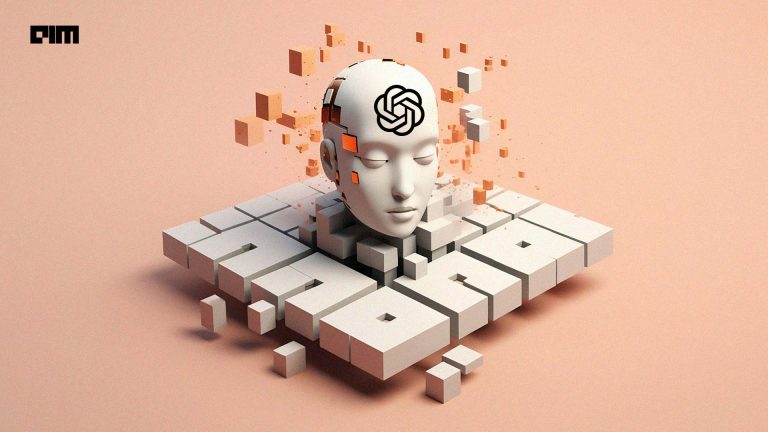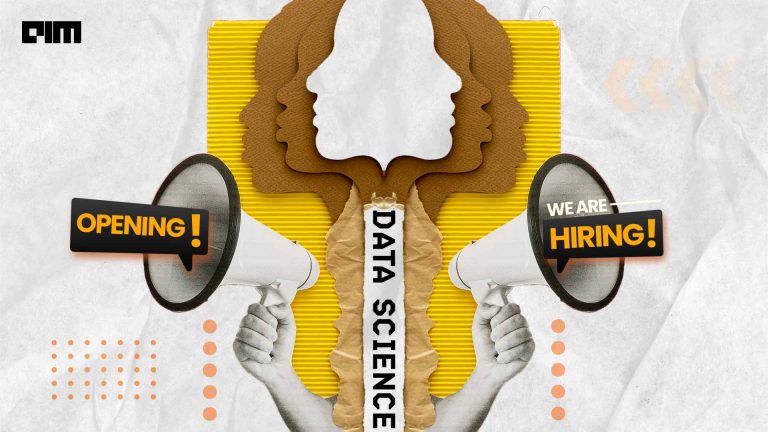Dr Sheela Siddappa is the Chief Advisor for Data Science at Bosch, where she leads the design and implementation of AI and data science solutions at multiple plants across the globe. With 15 years of experience in analytics and machine Learning, Dr Sheela has addressed business problems in various industry domains for multinational companies.
Before her current role, Dr Sheela worked as Global Head- Data Science at Bosch, and was responsible for building and steering the organisations for various projects in domains like digital, agriculture, health care, smart living etc. In this role, she helped acquire and lead global business, review and guide challenging projects and built data science accelerators. Previous to that, she had also led data science research and projects at Infosys and General Motors.
In the following interview, we connected with Dr Sheela to know more about her data science career and the work she has been doing at Bosch to transform the manufacturing processes using AI/ML solutions. Dr Sheela also shared some useful tips for aspiring data scientists.
How did your journey in data analytics begin?
My interest in Data Analytics started during my engineering days. The course Operations Research for two semesters’ and the elective of Design of Experiments offered by the Industrial Engineering discipline did all the magic. The eagerness to know more about the subject encouraged me to go for higher education. I did MS, and PhD from Texas, USA and the journey began.
What are the opportunities you see by implementing IIoT and Analytics in the manufacturing and industrial scenario?
There is a bonanza of opportunities. In fact, at Bosch, we have implemented several Industrial IOT embedded with Artificial Intelligence solutions at multiple plants across the globe. The benefits are enormous and we have been releasing them for a few years now. Our teams in India, Germany and the USA are supporting this activity for more than seven years. We are also providing solutions to our clients. Some of the company types range from a Dairy Company in Norway to Wheel Manufacturing Company in Turkey and OEMs in Germany, Japan and India.
How are you solving operational efficiencies for Bosch using different data analytics and AI?
AI helps in omitting some steps in the process. It also helps with the predictions and estimates to make better decisions than before. Some tasks are outsourced, while other tasks are automated by the Analytics tools and packages.
How can data analytics solutions help the industrial and manufacturing sector gain deeper insights? Can you share a few examples?
The AI solution has not only helped in getting insights but also aid in better business decisions. Some of the use cases are:
Quality: For instance, a typical tyre manufacturing company employs twice the number of associates for quality check in comparison with the associates involved in the production of tyres. By implementing Deep Learning Techniques on the Images of the tyres produced, we were able to identify the tyres that had defects, point the defect area on the tyre, and measure the defect size. Going forward, by adapting Multi-label Image Classification Technique, we were even able to detect tyres with more than one type of defects on them. DL enabled the decision to reject or repair tyres in seconds,. The number of employees supporting the quality check also reduced significantly.
Warranty: It is critical to learn the reason for high warranty costs for any OEM. Adopting Big Data technologies, bringing data from multiple sources to a common Database and developing visualisation dashboards (using Tableau) helped our customers in the UK to discover top components leading to high warranty costs. It could detect it region-wise on a time series model. It enabled business decisions and actions that minimise the warranty costs.
In yet another case, assignment of the warranty issue (technical) generated at the service station to the correct subject matter expert was manual and it caused massive delays. The assignment process was automated by adopting advanced Natural Language Processing Techniques. The instantaneous assignments helped eliminate the backlog.
What, according to you, has been the most important breakthrough in the last five years when it comes to AI?
Deep Learning has helped significantly in solving business problems. Some of the issues, which were challenging to solve earlier are now solvable with good accuracy and reliability.
For professionals, how challenging is it to prepare for an ever-changing data science field and how can they succeed?
For someone who has a strong knowledge of Data Science will not find it challenging to incorporate the advancements, as the underlying concepts would be either known or understandable. For those who are new to data science, they can consume the benefits using automated tools. Now, with academia incorporating Data Science as a subject in most of the disciplines will benefit youngsters in the long run.
Thus, I do not see any major challenges and find the future filled with AI solutions in almost every field. The days of employees saying, “what I studied in Engineering is of no use, as what I do at work does not need an Engineering degree. It is a routine job with no excitement” will soon vanish.
Finally, any tips for the Data Science aspirants?
Data science is a subject rich in mathematics, reasoning, logic etc. It requires one to use intelligence at work, write every constraint as an equation, process/steps as logic etc. If one is curious and filled with reasoning skills and like mathematics, do take up Data Science. Try to understand the fundamentals of the technique before implementing. Knowing the concepts at a high level does not suffice for someone wishing to pursue their career in Data Science for a long time.
Just applying tools and packages to data and getting the results is not the role of a data scientist. They should be able to identify the problem statement, draw inference from the model, and create an ensemble approach to develop a robust model. The most important aspects are being able to first identify the problem that needs to be solved and secondly envision the future, thereby identifying the correct AI-based enhancing features for the product — in alignment with the business.



















































































